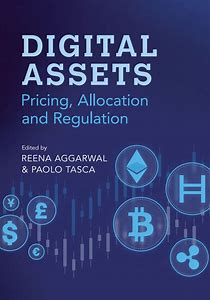Saudi Arabia’s economy is surging. The debt market tells the story: Banks in the Kingdom have extended more than SAR 2.2 trillion — that’s $587 billion in US dollars — in credit facilities to the private sector, with half of those credit facilities long-term, as of December 2022. These are record numbers and reveal the momentum behind Saud Arabia’s exceptional growth story.
Public-private partnership (PPP) transactions and the wider project finance industry are core to that momentum. Indeed, such projects are expanding at an accelerated pace, supported by infrastructure projects prioritized by the government as well as mega and giga projects across the country.
Yet this remarkable growth comes with risks — interest rate risk, in particular. The three-month Saudi Arabian Interbank Offer Rate (SAIBOR) over the last 10 years shows a recent surge and rising volatility. Compared with just 0.52% for the first five years, the daily standard deviation has more than doubled to 1.21% over the last five.
Three-Month SAIBOR Historical Curve

This raises questions about how interest rate risk should be allocated between the two primary stakeholders in any project finance transaction: the project company and the beneficiary entity. The former is a special purpose entity created to deliver the project and whose only asset is the project, while the latter, also called the off-taker or the procurer, pays the project company to deliver the agreed scope.
So, how can these two stakeholders best split the interest rate risk?
The Local Market Brief
The allocation of interest rate risk differs by project, but the conventional approach in Saudi Arabia puts the onus on off-takers. These beneficiary entities assume the interest rate risk as outlined in the winning bidder’s initial financial model through the hedge execution date. The bidder’s profitability is shielded from any interest rate volatility until the hedge execution.
If the interest rate rises above the assumed rate at the execution date, the financial model is adjusted to maintain the profitability metrics, with the off-taker paying for the interest rate deviation. If the interest rate falls, however, the benefits go to the off-taker.
To balance this equation, the stakeholders need to agree on an optimal hedging strategy and understand from the outset how the interest rate risk is allocated.
Here’s what needs to be done at the four key stages of the project finance process to achieve these outcomes.

1. The Pre-Bid Stage
The project company must devise and articulate a hedging strategy that specifies the hedge duration, optimal hedging quantum, and the instrument under consideration, among other critical factors. A smooth close-out requires buy-in from the lenders and hedge providers.
The project company’s goal is a successful close. As such, it should focus on securing the financing and executing the relevant documents as soon as possible. If the hedging element isn’t well planned, it could create delays and saddle the project company with unfavorable economic terms.
To establish the financial model and forecast, the project company must calculate the interest rate risk allocation before submitting its bid. For instance, if the planned financing is long term and the financing currency is not liquid enough for the whole hedge tenor, the project company should quantify the impact and build it into the project economics. Will the off-taker continue to compensate the project company for the interest rate risk of the unhedged portion after hedge execution? That must be clear early on. Will the off-taker participate in the subsequent gains but not the losses? If so, the project company needs to make an assessment.
Any margin the hedge providers make is usually excluded from the off-taker compensation plan since the project company bears the cost. That’s why the project company needs to plan and discuss the hedging credit spread with the hedge providers.
2. The Post-Bid Pre-Financial Close Stage
This is the key juncture in project finance, and its success or failure hinges on the project company’s grasp of the pre-bid stage agreement.
The project company might prefer that all parties agree on a hedge credit spread or that the spread be uniform across the lenders or hedge providers. But sometimes a credit spread based on the risks carried by the lenders may make sense.

At other times, the project company may favor credit spread competition among the hedge providers. In that case, every lender has a right to match according to the debt size on a prorated basis. The downside of this approach is that it might cost the lender an opportunity to participate in an income-generating trade, which could make the transactions less profitable than forecast.
If there is a minimum mandatory hedging requirement for long-term financing, the project company could obtain a tighter credit spread for the subsequent tranches. However, lower risk during the project completion or operation periods could mean this spread is better than the first tranche. Without an open dialogue at the outset, the project company accepts — by default — the initial credit spread for the subsequent hedges.
A hedging protocol should be drafted early and align with the agreed hedging strategy. The party that assumes the interest rate risk typically has more flexibility to design the protocol to ensure fairness, prudence, and transparency.
A dry run (rehearsal) of the hedge helps test the protocol’s reliability. But that requires an independent bench marker to validate the lowest competitive rate. The lowest rate is not always the best.
Project finance transactions involve complex financial modeling, and the cash flows change based on the hedge rate. Therefore, coordinating timely turnarounds with the updated cash flow is crucial. The financial/hedge adviser must administer the process according to how the hedging protocol defines it. Some project companies and off-takers may put an acceptable deviation limit between the assumed floating curve and the actual market rates, but each party must understand what’s at stake and set appropriate thresholds.
The International Swaps and Derivatives Association (ISDA) Agreement and schedule specify the terms of the derivative dealings. The schedule is customized and negotiated on both commercial and legal grounds. The hedge adviser covers the commercial aspects to ensure they are rational, coherent, and reasonable. This becomes more significant for long-dated hedges where interest rates may be converted to alternative floating rates in the future. The project company must approach this process cautiously and negotiate any language to fully grasp the implications. Again, this document should be among the first to be finalized during this step.

3. The Hedge Execution Stage
After a satisfactory dry run and once documentation is complete, the big day — the hedge execution — arrives. At this point, the project company should have a clear view of the economic terms and hedge details. Nevertheless, to avoid last-minute surprises, it should conduct a sanity check on the indicative hedge term sheets from the hedge providers to identify any misalignment before it executes the hedge. The stakeholders should also discuss the best execution methodology, which is dictated by the envisioned hedge size, currency, duration, etc.
Given the live hedge quotation’s sensitivity and the market forces at work, to avoid slippage costs and excessive hedge execution charges, the hedge adviser must confirm that all stakeholders agree on the terms and the outlook. All hedge providers are brought onto one call to quote; each party offers the best swap rate. If the off-taker bears the interest rate risk when rates have increased from the initial financial model, they should quickly validate that the best rate is fair and reasonable. Remember, the lowest offered rate is not always the best.
4. The Post-Hedge Execution Stage
If an unhedged portion of long-term debt remains, the project company should manage the future hedging carefully and keep the interest rate risk allocation in mind. Sometimes additional hedges are only permitted for a short timeframe before the initial hedge expires. This could cost the project company if it holds the interest at risk, so it should have complete discretion over when to hedge the remaining debt portions according to its risk appetite, the hedging strategy, and the project covenants.
Some project companies factor in the accounting impact of the derivative instruments. As a result, application of the voluntary IFRS9 hedge accounting standard to shield the profit and loss from potential volatility has become more common.

Conclusion
The optimal hedging strategy for the project company and off-taker is the product of a delicate process. Success requires an early and mutual understanding. During the planning, a checklist can help the project company confirm that every interrelated factor of the hedge has been taken into consideration.
Of course, each project is unique, so there is no one-size-fits-all hedging strategy. The smallest difference between two projects can mean huge variations in both the hedging strategy and protocol.
Such wide variations emphasize how critical it is to set expectations and define each stakeholder’s responsibilities at the outset of every project. This will help avoid overlapping tasks and ensure a smooth and seamless hedging process.
If you liked this post, don’t forget to subscribe to the Enterprising Investor.
All posts are the opinion of the author. As such, they should not be construed as investment advice, nor do the opinions expressed necessarily reflect the views of CFA Institute or the author’s employer.
Image credit: ©Getty Images/ Lebazele
Professional Learning for CFA Institute Members
CFA Institute members are empowered to self-determine and self-report professional learning (PL) credits earned, including content on Enterprising Investor. Members can record credits easily using their online PL tracker.















